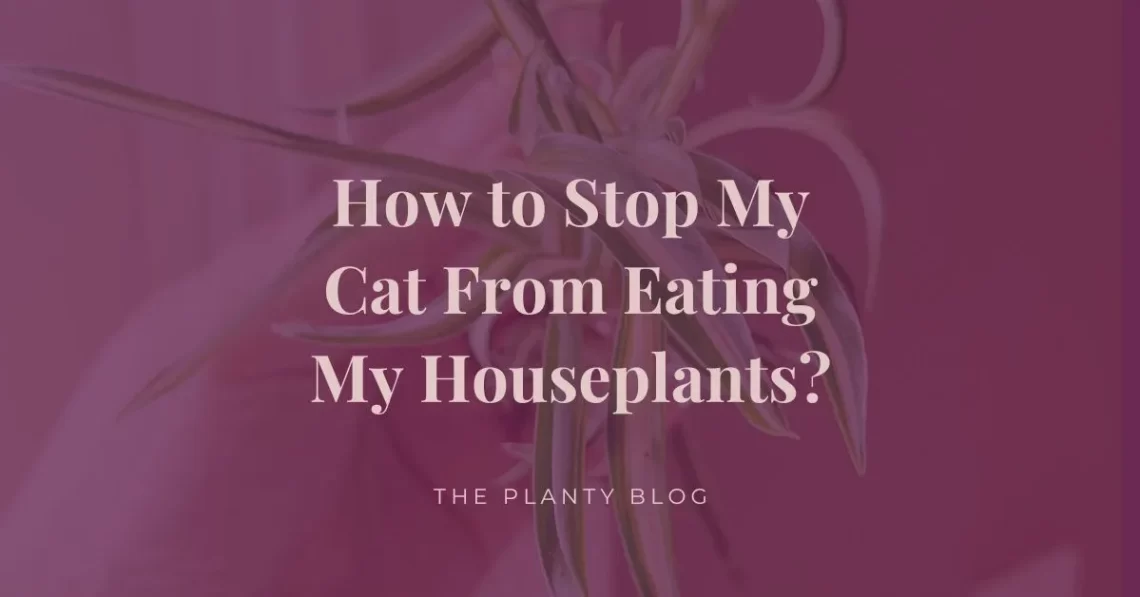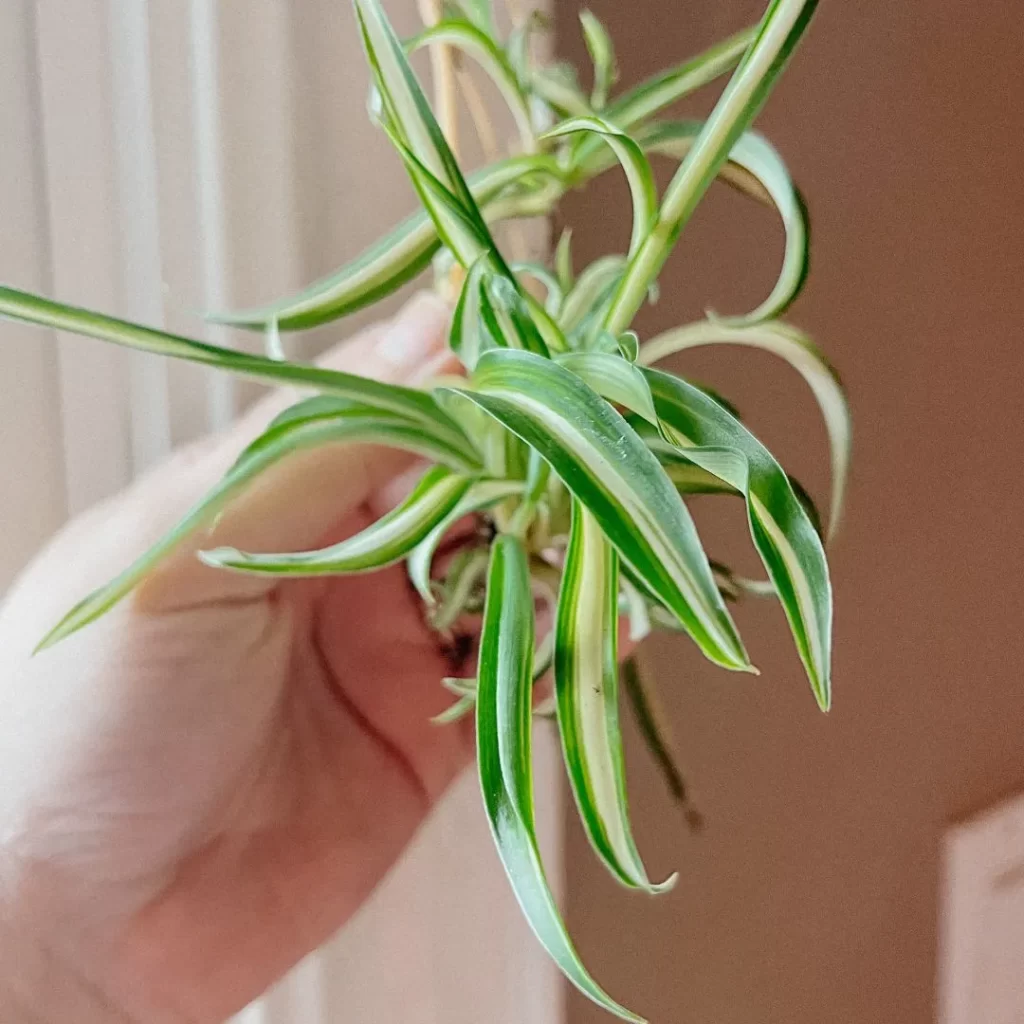
How to Stop Your Cat From Eating Your Houseplants
There are typically two types of cats: ones that couldn’t care less about houseplants around your home and ones who will stop at nothing to chomp on their beautiful foliage. Chances are, if you are reading this article, your four-legged furry family member falls into the second category. Houseplants are very enticing to cats, so it’s expected that they might want to explore and nibble on your plants. But since this behavior poses a serious risk to your cat, how can you stop your cat from eating your plants?
You can stop your cat from eating your houseplants by overcrowding high shelves, using cloches, terrariums, or greenhouses, hanging plants up high, or keeping plants closed off in dedicated rooms in your home. Patience is key, and understanding your cat’s behavior and giving them plenty of enrichment that doesn’t include your plants will also help greatly.
In this article, we’ll examine the dangers of letting your cat eat your houseplants and the different ways to prevent this. Then, you can rest easy and enjoy some houseplant harmony in your home!
Before we continue, I am not a veterinarian. Despite conducting thorough research and drawing upon my experiences as a dedicated houseplant enthusiast and cat owner, this article is strictly for informational purposes. I cannot assume responsibility for what you do with the advice provided in this article. Should you have concerns about your cat ingesting houseplants or displaying signs of illness or discomfort, I strongly recommend seeking immediate medical attention.
Why eating houseplants can be dangerous for your cat
Having nibble marks (or even a completely destroyed houseplant) is certainly frustrating, but there are more serious reasons why you shouldn’t let your four-legged family member feast on your houseplant.
Toxic houseplants
It may surprise you that many houseplants that people enjoy having in their homes are toxic to our animal friends. This toxicity can range from mild irritation to deadly, so it’s important to research before bringing a new plant home.
For example, Dieffenbachia, also known as the dumbcane plant, is highly toxic to cats and dogs due to insoluble calcium oxalates and proteolytic enzymes. Chewing this particular plant will release those crystals into your pet’s mouth. The result is swelling and an intense burning sensation in their mouth, tongue, throat, and GI tract. Sounds absolutely awful, doesn’t it? No one wants their pet to suffer.
In my experience, it’s better to avoid highly toxic plants entirely if you have a cat that eats your houseplants. Fortunately, there are so many alternatives that are just as beautiful. A great alternative to Dieffenbachia is the beautiful Cast Iron Plant (Aspidistra elatior). The ASPCA lists this plant as Non-Toxic to cats and dogs.
Check out my top 10 favorite plants that are non-toxic to pets and still beautiful here!
Upset stomach
Even if your houseplant isn’t toxic to cats, you aren’t totally in the clear if your cat eats it. It can still cause an upset stomach, vomiting, and diarrhea, which is really unpleasant. What’s worse, your cat won’t be able to recognize the source of the stomach problems and will keep going back to your plant.
For example, we had a beautiful Ponytail Palm, which is considered non-toxic to cats, so we assumed all would be well. However, my very relentless cat would stop at absolutely nothing to eat that plant. We even kept it on a sunny windowsill in a bathroom with a closed door. However, if we had guests over and they forgot to shut the door or if my husband forgot to tell them the “rule,” she would sneak in there and feast away.
While it didn’t pose an immediate risk to her, she would immediately vomit whatever she ate it. Once, we even found urine on the floor because she was straining to vomit the grassy leaves. After that, we immediately got rid of the plant. It was just too tempting for her, and we could not make it work at the time (she is 100% okay, by the way!).

Choking and impaction
Since cats are not adapted to munching away on plants (they are primarily carnivores), there’s always a risk of a leaf or plant parts getting lodged in their throat, stuck in their mouth, or blocking their airways.
If they consume too much plant matter, there are even some cases of cats getting blockages in their digestive tract. This is very serious and will need immediate veterinary care as well.
Toxic plant supplies
Even though your plant may not be toxic, some of the materials in your plant pot can still be dangerous. Fertilizers, insecticides, and other soil additives can also be toxic. For example, some systemic pest controls are absorbed by the roots and will kill any pests nibbling your plant. This also has the potential to make your cat sick when they bite the leaves.
How to Stop Your Cat From Eating Your Plants
So now that you know the true dangers of letting your cat eat your houseplants, what can you do to actually stop it? Ultimately, you know your cat’s behavior best and what will work for you. However, it may take some trial and error to find out what will work best in your home. My advice is that if you are experimenting, use non-toxic plants only during this time.
Shelving and Overcrowding
Keeping your plants on shelves is the natural solution and often the first one that people will try. Bookshelves, floating wall shelves, or even on top of cabinets and refrigerators are common locations where people keep their plants out of reach from their kitties.
But we all know that cats can be very agile, and many have no issues jumping onto a shelf if it’s the only thing standing between them and what they truly want. This is where overcrowding comes into play. If there isn’t a “landing zone” for your cat, they may not take the risk of jumping up there. So, filling that shelf with decor nick-nacks, photo frames, or even more plants can be a great deterrent. Unless your cat is truly an agent of chaos (because we know some of them are), they will not make the leap with no regard for what comes next.
Fortunately, my cat is chaotic but kind of a princess, so I found this worked well for my Calatheas and Stromanthe plants in our last home.
Hanging Plants
Fortunately, macrame has made a comeback in recent years, so hanging plants around your home has become much more common. You can hang your plant up high near a window, which may be safer than leaving it on a shelf or cabinet. However, be careful of leaves dropping onto the floor.

Cloche or Terrarium
If you have a smaller plant you’d like to protect from your kitty (or your cat from your plant!), consider getting a cloche or a terrarium. Terrariums are enclosures that will help boost humidity for your plants but will also keep them enclosed and, therefore, protected from your curious cat.
A cloche is a dome-shaped glass cover that you place over your plant, which will also keep it protected. I find that a cloche is a bit more flexible. You can just lift the glass dome part to give your plants a bit of airflow, and they are a bit easier to maintain than a terrarium. Make sure if you do choose a cloche that you pick on that it is stable and sturdy so it doesn’t get accidentally knocked over.
Decorative Birdcages
A fun hack that I have discovered that works well for plants that may need a bit more airflow is using decorative birdcages to protect my plants. You will have to make sure that the bars are close enough together that your cat can’t stick their paws inside of it. Also make sure that your plant’s leaves aren’t popping out of the sides, but I have enjoyed keeping a few pet-safe peperomia plants in my decorative birdcage.
Greenhouse Cabinet
If you have the budget, you can jump on the Ikea Greenhouse Cabinet trend that has taken the world by storm in recent years. The MILSBO and the RUDSTA Ikea cabinets are great options. They have beautiful glass doors that can be easily customized to add grow lights, humidifiers, and fans. I love that they can be easily locked to ensure your cat cannot get to the houseplants inside.
Once again, I’d caution being careful of any leaves that may fall out the doors and make sure that you keep them locked at all times. But since getting my Ikea cabinets, I have had no issues with my cat interacting with the houseplants inside.
A Dedicated Plant Space
Finally, if all else fails, you can set a particular room in your home that is off-limits to your animals. This is where you can keep your houseplants safe and sound. As I mentioned before with the bathroom fiasco, this isn’t always guaranteed to work. So, you may want to combine this method with any of the above to be extra careful.
When I had the space, I had a dedicated home office that was off-limits to animals. I installed a baby gate in front of the door while working in my office. This way, my dog and cat could still see me and not feel shut out while I could still supervise. When I was done for the day, I would close the door. That way, nobody could jump over the baby gate to access my plants. Again, this system may not work for everyone, but it is an option!
Patience, Understanding, and Enrichment
Ultimately, stopping your cat from eating your houseplants takes a bit of creativity, time, and patience. All homes are set up differently, cat personalities can vary. What works for you may not work for someone else. Patience is key!
Cats are very much attached to their territory and space. So, understandably, bringing home a new houseplant is novel and exciting for them. Make sure you give your cat plenty of safe enrichment and playing with your cat regularly to burn off some energy. One of my favorite resources for giving your cat a full, enriching and safe life is Jackson Galaxy. His concept on “catification” in the home has really helped me design my home in such a way that honors my cat’s needs, honors my love for houseplants, and keeps everyone safe and healthy.
